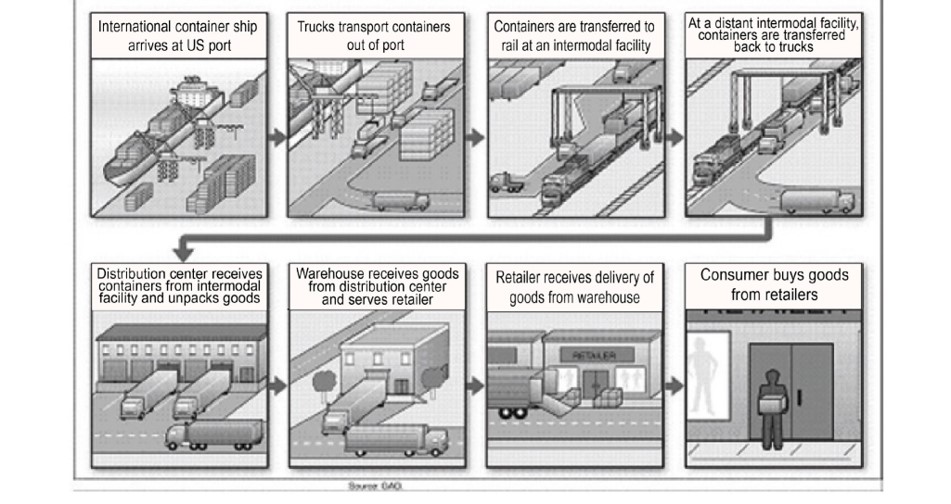1.16 Goods movement in Seaport
- Let us assume a renowned Denim brand from the US wants to outsource its jeans consignment from China. Once the consignment is ready, the exporter will first select a particular shipping company whose container will come to its factory for cargo loading.
- After loading the containers, the containers are sealed and an identical no. or a particular id is given to the exporter so that they can track their goods.
- Now the Freight forwarder will arrange for the intermodal transport i.e. transporting the container from the exporter warehouse or factory to the designated shipping port for loading into the ships.
Shipping:
- In the port, the container weights are measured, and the entries are made according to that. The container is stacked in the port in such a manner that they can be taken out easily as per the schedule of their assigned vessel. Now the container is ready to be loaded on the ship.
- Once the ship arrives, the container is brought from the port storage facility, near to the ship by container port trucks
- The container can be stored on the ship’s cargo hold, where container guides are provided to draw and place the container inside the hold.
- Once the ship reaches the destined port, the container will be unloaded by the port cranes, and it is transported to the port bay or warehouse using the port container trucks.
- Once the custody of the shipment is acquired by the Importer’s representative or by the freight forwarder, the cargo will be transported using intermodal transport to the importer’s warehouse where the container is unloaded.
- The empty container is now returned to the shipping line designated container yard, where it will wait for the next booking and onward journey.
- The world is now connected by thousands of containers making it feasible for businesses and people to trade across the globe.

Figure 1.14: Example of Goods Movement from Port of Entry to Customer